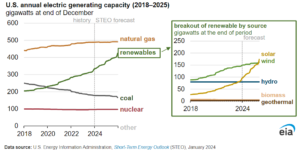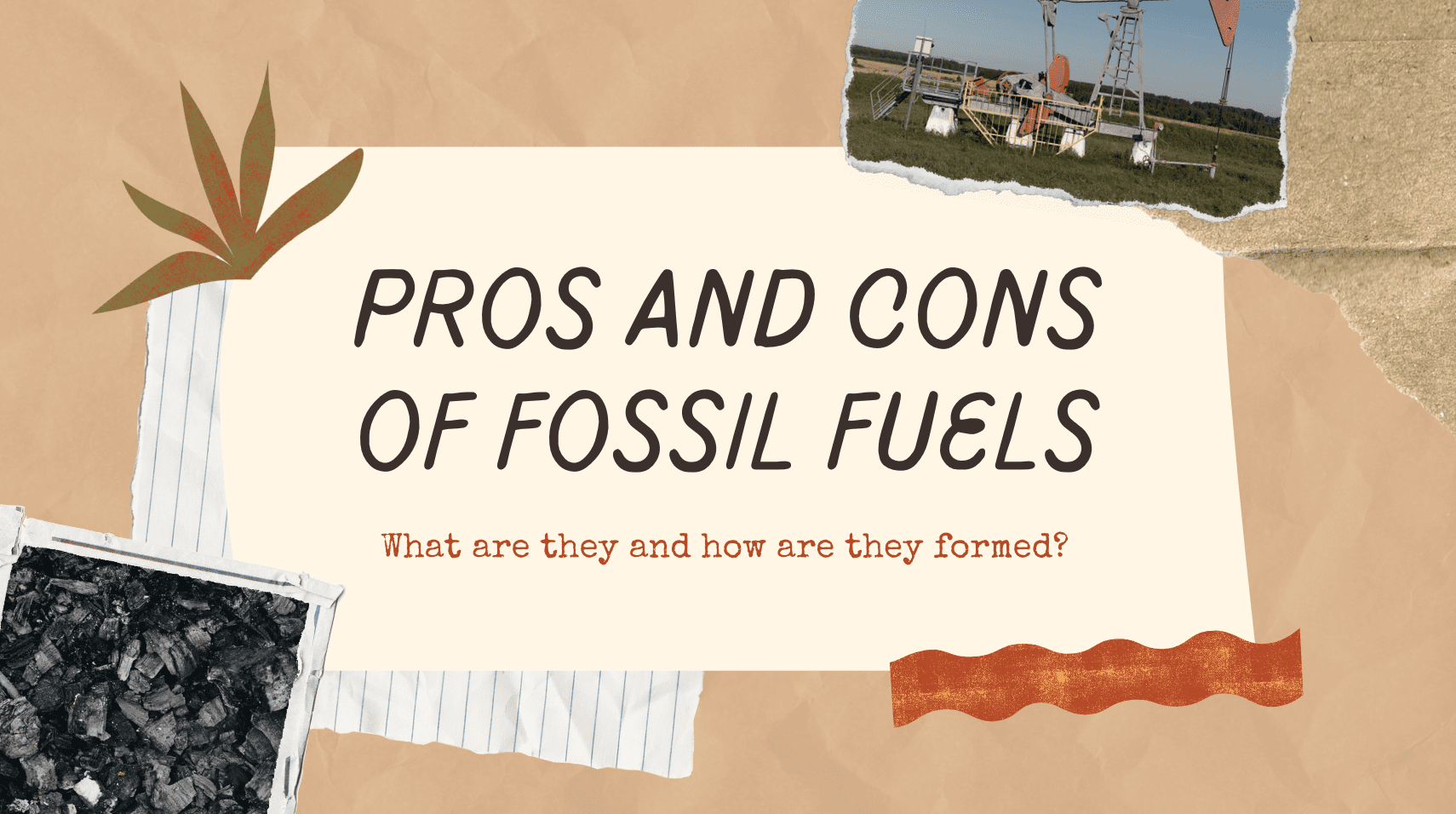What Are The Different Types Of Renewable Energy? Situation In The US
- Renewable Energy

Renewable energy, often synonymous with green or sustainable energy, refers to power derived from natural resources that replenish themselves over short periods. There are some kids of renewable energy, so in this article, we will explain about main energies, their benefits, and the current situation in the US.
Table of Contents
The main types of renewable energy
Unlike fossil fuels, renewable energy is inexhaustible and less harmful to the environment, so that it is needed to shift from non-renewable energy to renewable ones.
Solar power
Solar energy, harnessed through photovoltaic (PV) panels or solar thermal systems, converts sunlight directly into electricity or heat. This form of energy is particularly beneficial due to its abundant availability and scalability, from small rooftop installations to large solar farms. Advancements in solar technology have significantly reduced costs, making it one of the fastest-growing renewable energy sources worldwide.
>>Take a look at more of solar energy pros and cons
Wind energy
Wind energy is generated by wind turbines that convert the kinetic energy of wind into electrical power. It’s a clean, efficient source of energy, with the potential to meet a significant portion of global electricity needs. Wind farms can be located on land (onshore) or at sea (offshore), where wind speeds are typically higher and more consistent.
>>Take a look at more of wind energy pros and cons
Hydropower
Hydropower, or hydroelectric power, is derived from the energy of moving water. It’s one of the oldest and most mature sources of renewable energy. Hydropower plants range from large-scale dams to small run-of-the-river plants. While hydropower is a significant source of renewable electricity, its environmental and social impacts, such as habitat disruption and displacement of communities, are important considerations.
Biomass
Biomass energy comes from organic material like wood, agricultural crops, and waste. When burned, the chemical energy in biomass is released as heat, which can be used to generate electricity or produce biofuels. Biomass is a versatile energy source, as it can be used in small stoves for heating or in large power plants.
Geothermal energy
Geothermal energy utilizes the Earth’s internal heat, typically sourced from hot water or steam reservoirs beneath the Earth’s surface. It can be used for electricity generation or direct heating applications. Geothermal energy is reliable and produces minimal emissions, but its availability is geographically limited to areas with high tectonic activity.
>>Take a look at more of geothermal energy pros and cons
Why renewable energy matters
In the context of global climate change and diminishing natural resources, the significance of renewable energy cannot be overstated. This section explores the fundamental reasons why transitioning to renewable energy is critical for our planet.
- Addressing Climate Change: Renewable energy sources produce little to no greenhouse gas emissions, unlike fossil fuels, which are major contributors to global warming.
- Ensuring Energy Security: Renewable energy sources are locally available in most parts of the world, reducing dependence on imported fossil fuels. This enhances energy security and reduces vulnerability to global energy price fluctuations.
- Sustainable Development: Renewable energy is key to sustainable development. It ensures that future generations have access to clean, reliable, and affordable energy, while preserving the planet.
Current situation of renewable energy in the United States
The current situation and goals of renewable energy in the United States are both ambitious and indicative of a significant shift towards sustainable energy practices. Here’s a detailed overview based on the latest data:
Solar energy
 Date source: Short Term Energy Outlook
Date source: Short Term Energy Outlook
- Growth Forecast: The U.S. Energy Information Administration (EIA) projects a 75% growth in solar power generation from 2023 to 2025. Specifically, solar generation is expected to increase from 163 billion kilowatt-hours (kWh) in 2023 to 286 billion kWh in 2025.
- Increasing Share: Solar’s share of total U.S. electricity generation is anticipated to rise to 6% in 2024 and 7% in 2025, up from 4% in 2023.
- Capacity Expansion: The total solar capacity is expected to grow significantly. By the end of 2024, solar developers are projected to increase the nation’s total operational capacity by 38%, reaching 131 GW.
Date source: SHORT-TERM ENERGY OUTLOOK, Jan. 4, 2024
Wind energy
- Moderate Growth: Wind power generation is expected to grow by 11%, increasing from 430 billion kWh in 2023 to 476 billion kWh in 2025.
- Contribution to Electricity Generation: Wind and solar together accounted for 14% of U.S. electricity generation in 2022. This is forecasted to rise slightly, reaching 16% in 2023 and 18% in 2024.
Date source; SHORT-TERM ENERGY OUTLOOK, Jan. 4, 2024
Overall renewable energy landscape
- Reducing Dependence on Fossil Fuels: New renewable energy capacity, primarily from wind and solar, is expected to reduce electricity generation from coal-fired and natural gas-fired power plants in 2023 and 2024.
- Current Contribution: In 2022, renewable sources including solar, wind, hydroelectric power, biomass, and geothermal accounted for 22% of total U.S. electricity generation.
- Surpassing Other Sources: Renewable generation as a group surpassed total nuclear generation in 2021 and exceeded coal in 2022.
Date source from: pv magazine, JANUARY 17, 2024
CONTACT US
Please feel free to contact us at anytime.
We will get back to you as soon as we
can!
Editor
OFFSEL Owned by Erevista Inc, OFFSEL is specializes in Environmental issues, especially in carbon neutrality. We primarily provide the latest information on environmental energy.


